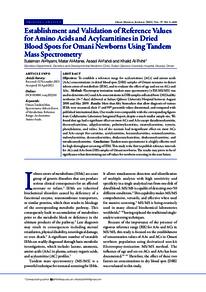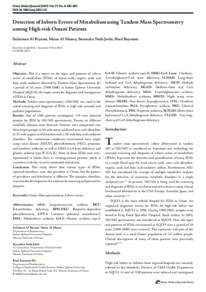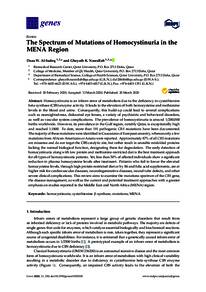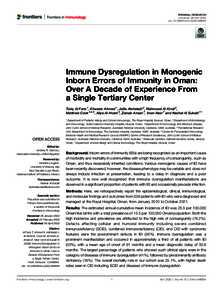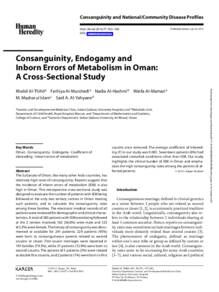Document
Establishment and validation of reference values for amino acids and acylcarnitines in dried blood spots for Omani newborns using tandem mass spectrometry.
Identifier
DOI 10.5001/omj.2022.88
Contributors
Publisher
Oman Medical Specialty Board.
Gregorian
2022-09
Language
English
Subject
English abstract
Objectives: To establish a reference range for acylcarnitines (ACs) and amino acids
(AAs) concentrations in dried blood spot (DBS) samples of Omani neonates to detect
inborn errors of metabolism (IEM), and to evaluate the effect of age and sex on ACs and
AAs. Methods: Electrospray-ionization tandem mass spectrometry (+ESI-MS/MS) was
used to determine ACs and AAs concentrations in DBS samples collected from 1302 healthy
newborns (0–7 days) delivered at Sultan Qaboos University Hospital between August
2008 and May 2009. Results: More than fifty biomarkers that allow diagnosis of various
IEMs were measured, their 1st and 99th percentile values determined, and compared with
published international data. Our results were comparable with the corresponding figures
from Collaborative Laboratory Integrated Report, despite a much smaller sample size. We
found that age had a significant effect on most ACs and AAs except decadienoylcarnitin,
decenoylcarnitine, adipylcarnitine, palmitoylcarnitine, steatoylcarnitine, tyrosin,
phenylalanine, and valine. Sex of the neonate had insignificant effect on most ACs
and AAs except free-carnitine, acetylcarnitine, hexanoylcarnitine, octanoylcarnitine,
malonylcarnitine, decanoylcarnitine, dodecenoylcarnitine, dodecanoylcarnitine, and
tetradecanoylcarnitine. Conclusions: Tandem mass spectrometer is a highly effective tool
for high throughput screening of IEM. This study is the first to publish reference intervals
for ACs and AAs from DBS samples of Omani newborns. The results may prove to be of
significance when determining cut-off values for newborn screening in the near future.
Member of
Resource URL
Category
Journal articles

